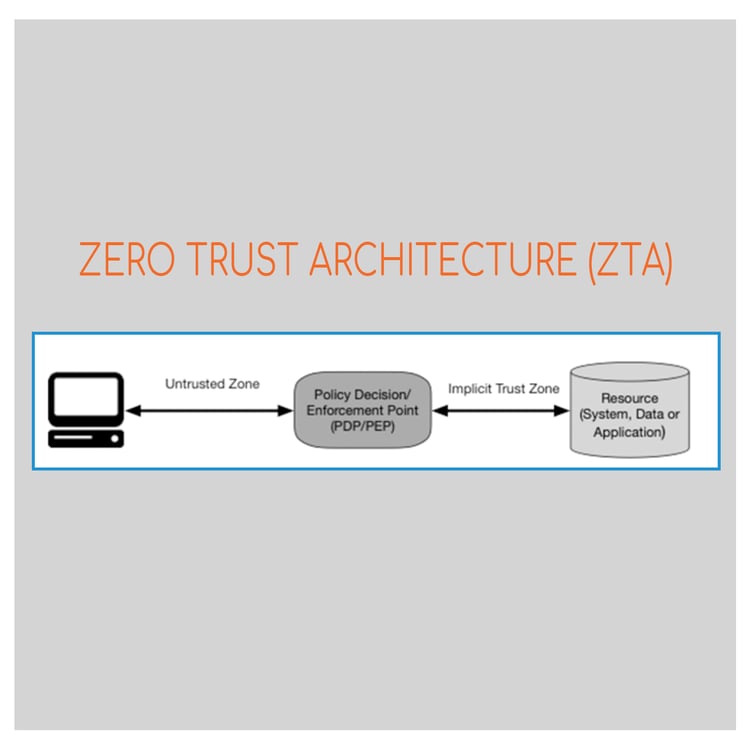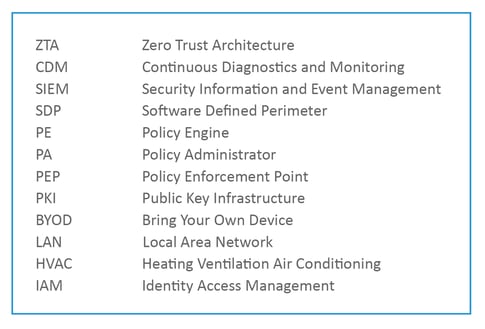
In the previous blog, I had provided insights on what ZTA is, what the core components that belong to ZTA are, why organizations should adopt ZTA and what the threats to ZTA are. In this blog, I will go through some of the common deployment use cases/scenarios for ZTA using software defined perimeters and move away from enterprise network-based perimeter security.
Scenario 1: Enterprise using cloud provider to host applications as cloud services and accessed by employees from the enterprise owned network or external private/public untrusted network
In this case, the enterprise has hosted enterprise resources or applications in a public cloud, and users want to access those to perform their tasks. This kind of infrastructure helps the organization provide services at geographically dispersed locations who might not connect to the enterprise owned network but could still work remotely using personal devices or enterprise owned assets. In such cases, the enterprise resources can be restricted based on the user identity, device identity, device posture/health, time of access, geographic location and behavioral logs. Based on these risk factors, the enterprise cloud gateway may wish to grant access to resources like employee email service, employee calendar, employee portal, but may restrict access to services that provide sensitive data like the H.R. database, finance services or account management portal. The Policy Engine/Policy Administrator will be hosted as a cloud service which will provide the decision to the gateway based on the trust score calculated from various sources like the enterprise system agent installed on devices, CDM system, activity logs, threat intelligence, SIEM, ID management, PKI certificates management, data access policy and industry compliance. The enterprise local network could also host the PE/PA service instead of the cloud provider, but it won’t provide much benefit due to an additional round trip to the enterprise network to access cloud hosted services which will impact overall performance.
Scenario 2: Enterprise using two different cloud providers to host separate cloud services as part of the application and accessed by employees from the enterprise owned network or external private/public untrusted network
The enterprise has broken the monolithic application into separate microservices, or components hosted in multiple cloud providers even though it has its own enterprise network. The web front end can be deployed in Cloud Provider A, which communicates directly to the database component hosted in Cloud Provider B, instead of tunneling through the enterprise network. It is basically a server-server implementation with software defined perimeters instead of relying on enterprise perimeters for security. The PEPs are deployed at the access points of web front end and database components which will decide whether to grant access to the service requested based on the trust score. The PE and PA can be services hosted either in cloud or other third-party cloud provider. The enterprise owned assets that have agents installed on them can request access through PEPs directly and the enterprise can still manage resources even when hosted outside the enterprise network.
Scenario 3: Enterprise having contractors, visitors and other non-employees that access the enterprise network
In this scenario, the enterprise network hosts applications, databases, IoT devices and other assets that can be accessed by employees, contractors, visitors, technicians and guests. Now we have a situation where the assets like internal applications, sensitive information data should only be accessed by employees and should be prevented from visitors, guests and technicians accessing it. The technicians who show up when there is a need to fix the IoT devices like smart HVAC and lighting systems still need to access the network or internet. The visitors and guests also need access to the local network to connect to the internet so that they could perform their operations. All these situations described earlier can be achieved by creating user, device profiles, and enterprise agents installed on their system to prevent network reconnaissance/east-west movement when connected to the network. The users based on their identity and device profile will be placed on either the enterprise employee network or BYOD guest network, thus obscuring resources using the ZTA approach of SDPs. The PE and PA could be hosted either on the LAN or as a cloud service based on the architecture decided by the organization. All enterprise owned devices that have an installed agent could access through the gateway portal that grants access to enterprise resources behind the gateway. All privately owned devices that are used by visitors, guests, technicians, employee owned personal phones, or any non-enterprise owned assets will be allowed to connect to BYOD or guest network to use the internet based on their user and device profile.
Zero Trust Maturity
As organizations mature and adopt zero trust, they go through various stages and adapt to it based on the cost, talent, awareness and business domain needs. Zero trust is a marathon, and not a sprint, hence incrementally maturing the level of zero trust is the desired approach.
Stage 0: Organizations have not yet thought about the zero trust journey but have on-premises fragmented identity, no cloud integration and passwords are used everywhere to access resources.
Stage 1: Adopting unified IAM by providing single sign-on across employees, contractors and business partners using multi-factor authentication (MFA) to access resources and starting to focus on API security.
Stage 2: In this stage, organizations move towards deploying safeguards such as context-based (user profile, device profile, location, network, application) access policies to make decisions, automating provisioning and deprovisioning of employee/external user accounts and prioritizing secure access to APIs.
Stage 3: This is the highest maturity level that can be achieved, and it adopts passwordless and frictionless solutions by using biometrics, email magic links, tokens and many others.
Most of the organizations in the world are either in stage 0 or stage 1 except for large corporations who have matured to stage 2. Due to the current COVID situation, organizations have quickly started to invest heavily to improve their ZT maturity level and the overall security posture.
Acronyms

References
Draft (2nd 1) NIST Special Publication 800-207. Available at https://nvlpubs.nist.gov/nistpubs/SpecialPublications/NIST.SP.800-207-draft2.pdf
The State of Zero Trust Security in Global Organizations
Effective Business Continuity Plans Require CISOs to Rethink WAN Connectivity
More from the blog
View All Blog PostsEvolving to Zero Trust Architecture (ZTA) – Part 1
Continue ReadingSaaS, PaaS, IaaS…Now what is RaaS (Ransomware as a Service)??
Continue ReadingCC Pace's 35th Anniversary - Part II
Continue ReadingSubscribe to Our Blog
Fill out your email address to receive notifications about new blog posts from CC Pace!
